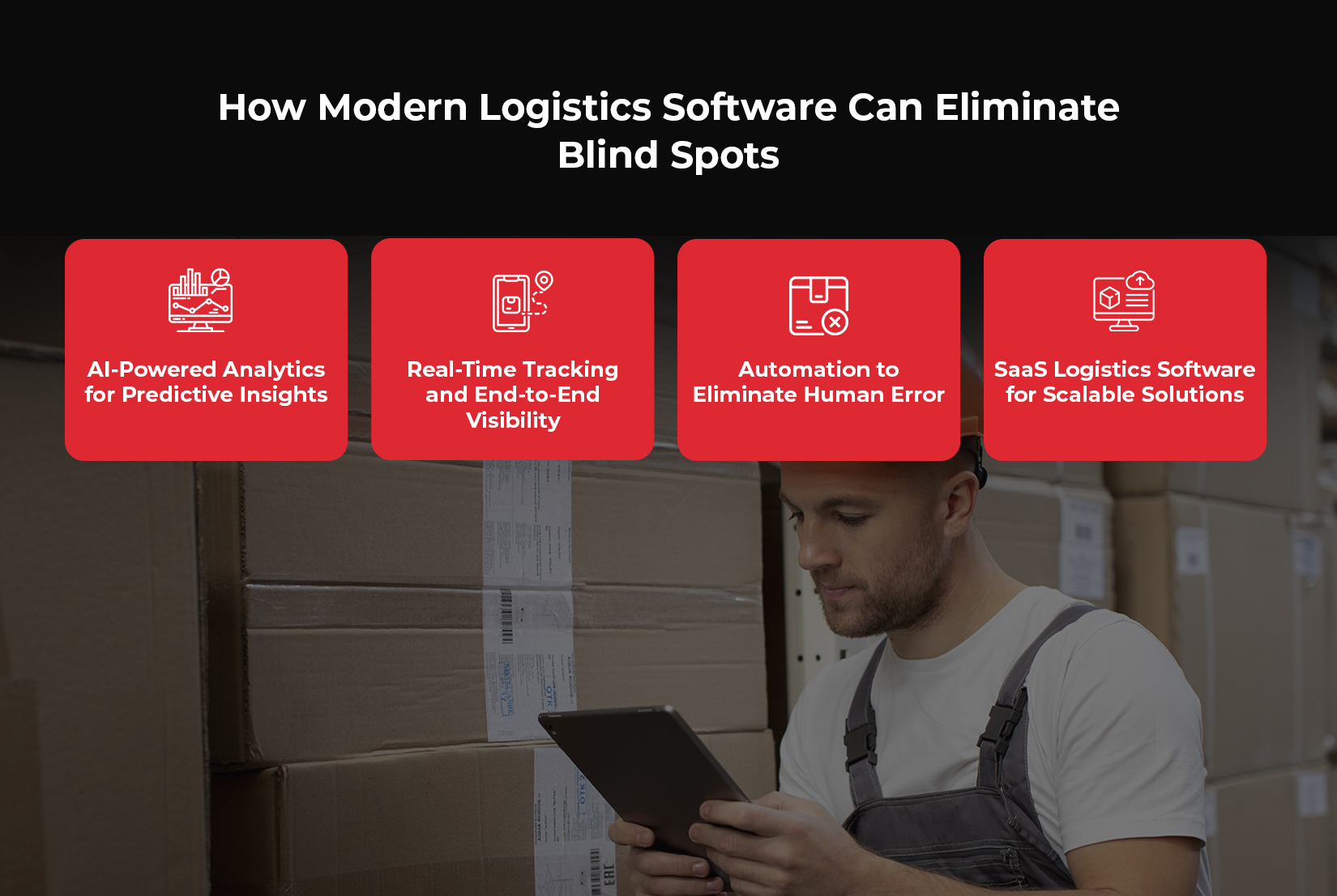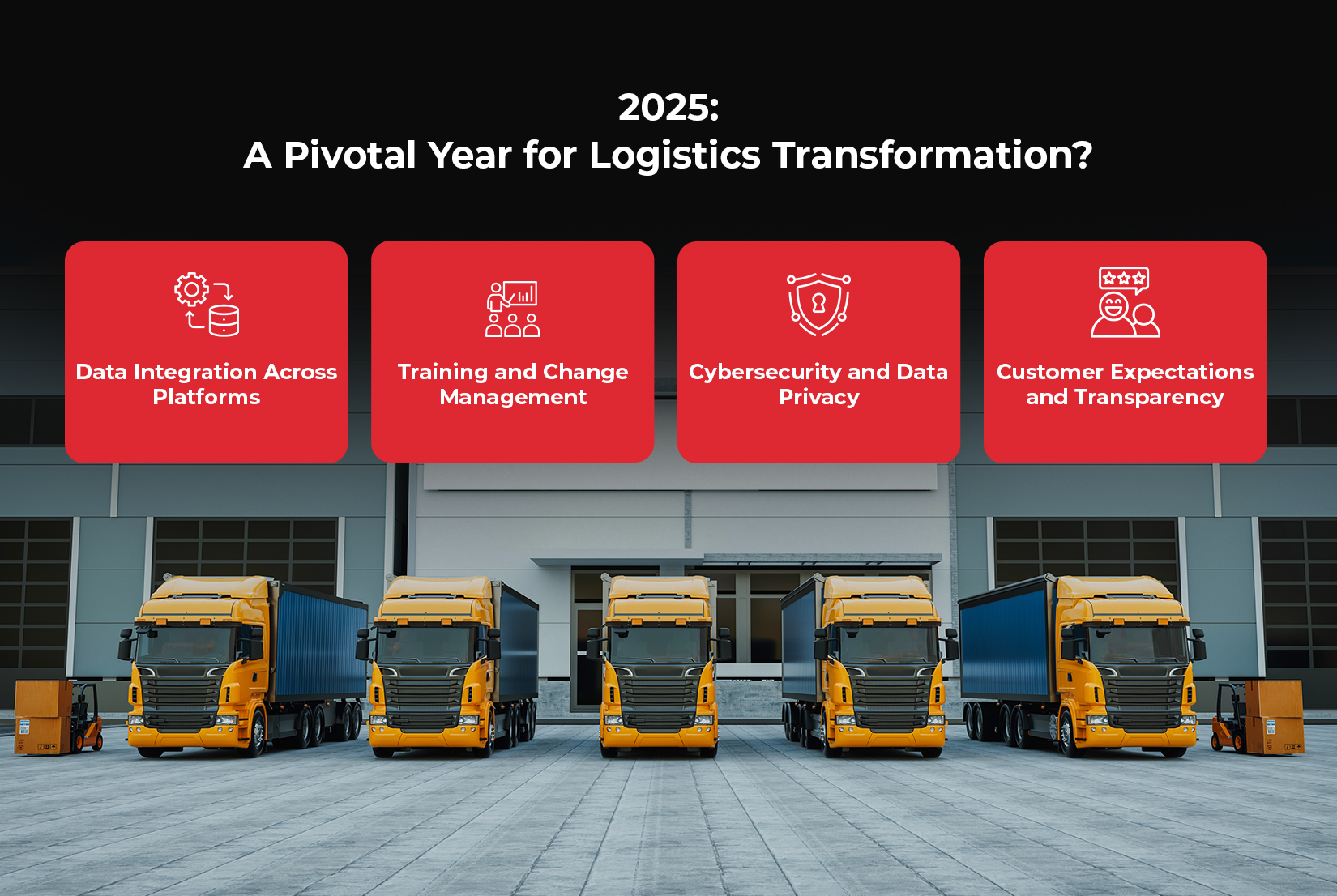
Is 2025 the Year We’ll Finally Eliminate Logistics Blind Spots?
In 2025, logistics professionals globally are expected to tackle one of the industry’s oldest and most persistent challenges, logistics blind spot. These are the gaps in visibility and control that prevent seamless, efficient and proactive logistics operations. With the rise of logistics software solutions like AI-powered analytics, end-to-end visibility platforms, and automation tools, blind spots in the supply chain are becoming easier to address. By 2025, these advancements may significantly minimize such inefficiencies, transforming the logistics industry. So, will 2025 be the breakthrough year for logistics? Let’s delve into the role of modern logistics software and examine the trends, stats, and factors.
The Persistent Problem of Logistics Blind Spots
Blind spots in logistics management are not new. These visibility gaps arise due to factors like fragmented processes, incomplete data, a lack of synergism between systems and human error. When left unchecked, these blind spots lead to inefficiencies, higher operational costs and missed optimization opportunities. According to a recent study by Accenture, poor supply chain visibility costs companies an estimated $1.5 trillion annually in missed opportunities and inefficiencies. AI-powered logistics software can identify patterns from historical and real-time data to alert companies of potential risks, such as extreme weather or geopolitical disruptions. This enables quick, proactive adjustments to mitigate these risks.
Traditionally, many logistics operations have relied on outdated systems. These systems often lack the agility and transparency necessary for modern demands. However, recent advancements in logistics software may finally provide the answer. The global logistics software market, which stood at $12.96 billion, is projected to reach at $18.31 billion by 2026. Thereby, indicating widespread adoption and investment in advanced logistics solutions.
How Modern Logistics Software Can Eliminate Blind Spots

The latest logistics management software solutions are transforming how logistics operations are managed. Along with this they are also adding advanced capabilities for better visibility and transparency. These tools also provide predictive insights, improving efficiency across the entire supply chain. Here’s how these solutions are poised to help address logistics blind spots:
1. AI-Powered Analytics for Predictive Insights:
Artificial Intelligence (AI) is transforming logistics management software by enabling predictive analytics to forecast disruptions before they occur. According to Deloitte, 60% of logistics companies using AI report increased visibility and an average of 15% reduction in forecasting errors. AI-powered logistics software can identify patterns from historical and real-time data to alert companies of potential risks, such as extreme weather or geopolitical disruptions. This enables quick, proactive adjustments to mitigate these risks.
2. Real-Time Tracking and End-to-End Visibility:
Modern end-to-end logistics management software provides comprehensive, real-time tracking capabilities, enhancing visibility across all stages of the supply chain. By integrating with IoT devices, companies can now monitor shipments with GPS, check storage conditions, and receive updates on driver performance.
According to a survey by Gartner, companies using real-time tracking see a 20% improvement in on-time deliveries and a 30% reduction in loss-related incidents. Real-time tracking not only minimizes disruptions but also enhances customer satisfaction and reduces operational costs.
3. Automation to Eliminate Human Error:
Logistics automation software is providing essential in reducing errors caused by human oversight. Data entry, inventory management and route planning can now be automated, reducing the burden on staff and allowing them to focus on strategic decision-making.
McKinsey estimates that automation can cut logistics costs by up to 30% and reduce errors by as much as 80%. This makes automation an invaluable tool for eliminating blind spots in logistics. The added efficiency not only streamlines operations but also enables logistics companies to remain competitive in a fast-evolving industry.
4. SaaS Logistics Software for Scalable Solutions:
As businesses grow, their logistics needs expand, requiring scalable solutions that can evolve with their operations. SaaS logistics software offers this flexibility, allowing companies to add features or users as required without significant additional investment. Small-to-medium-sized businesses benefit especially, as they can access the best logistics management software tools without major upfront costs.
A report from MarketsandMarkets estimates that the SaaS logistics solution market will grow by 22.1% between 2022 and 2027. Thus, indicating high demand for scalable, cloud-based solutions.
2025: A Pivotal Year for Logistics Transformation?

With the growing adoption of best logistics software solutions focusing on end-to-end management, automation, and AI, 2025 is set to be a transformative year. However, several factors will determine whether these technologies can fully eliminate logistics blind spots.
1. Data Integration Across Platforms:
For a logistics solution to be genuinely effective, it must integrate seamlessly with other platforms within a company’s ecosystem. This includes systems such as ERP (Enterprise Resource Planning) and CRM (Customer Relationship Management). Integration is crucial for achieving complete visibility and avoiding blind spots. A study by Logistics Management found that 75% of logistics professionals believe cross-platform integration is essential for real-time decision-making and minimizing operational gaps.
2. Training and Change Management:
Technology alone cannot eliminate logistics blind spots, the human factor is equally important. Even the most advanced logistics automation software requires knowledgeable teams to interpret data and make informed decisions. In fact, a report from PwC found that companies investing in employee training around new logistics software see a 15% higher operational efficiency. Effective training enables companies to maximize the potential of their logistics software investments. It also helps cultivate an agile workforce prepared for future changes.
3. Cybersecurity and Data Privacy:
As logistics operations become increasingly data-driven, cyber threats are on the rise. The logistics industry is particularly vulnerable, with cybercrime expected to cost businesses over $10 trillion globally by 2025, according to Cybersecurity Ventures.
SaaS logistics software and AI-powered logistics software must be equipped with advanced cybersecurity measures to protect data. Companies that invest in security will ensure data remains safe and operations run smoothly, building trust with clients and avoiding costly disruptions.
4. Customer Expectations and Transparency:
Customer expectations are higher than ever, with 82% of customers expecting real-time visibility for deliveries, according to a report by KPMG. Meeting these expectations is crucial for companies seeking to build loyalty and differentiate themselves in a competitive market. Logistics management software that prioritizes end-to-end visibility and provides accurate tracking information can significantly improve customer satisfaction.
Key Takeaways for Logistics Leaders
To finally eliminate logistics blind spots in 2025, companies must adopt the latest logistics software strategically. Here are some key steps logistics leaders can take:
1. Invest in AI and Automation: AI-powered logistics software and automation tools reduce human error and enable data-driven, proactive decision-making.
2. Embrace Real-Time Tracking: Leveraging end-to-end logistics management software provides real-time visibility that improves operational efficiency and customer satisfaction.
3. Ensure Cross-Platform Integration: Enable data flow between systems to prevent information silos and gain a comprehensive view of logistics operations.
4. Prioritize Employee Training: Investing in training ensures teams are prepared to leverage logistics automation software to its fullest potential, enhancing agility and operational efficiency.
5. Focus on Data Security: With the adoption of SaaS logistics software, companies must implement strong cybersecurity measures to protect sensitive data and build trust with clients.
Conclusion
As logistics technology advances, logistics solutions will play a central role in removing blind spots and enabling full control over supply chain operations. By integrating innovation with strategic management, 2025 could indeed be the year the logistics industry achieves its long-sought goal of comprehensive visibility, resilience, and seamless management across the entire supply chain. Click on the red button below and book a demo with LogiNext to eliminate the blind spots today!
78







@LogiNext